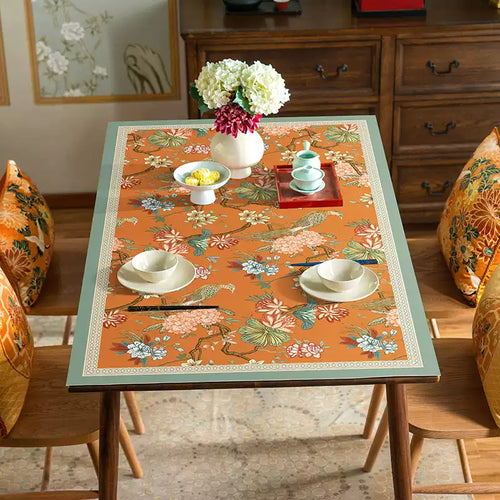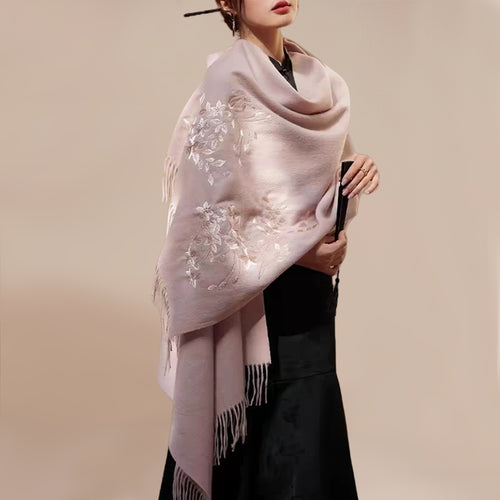How does embroidery integrate into the present and become a part of our daily lives? Traditional embroidery has pushed the boundaries of line variations and color textures to the extreme. The choice of another medium for cross-disciplinary fusion and innovation is a direction and entry point worth considering for creators and designers. Examples include embroidery x leather with contrasting materials, embroidery x art installations, and embroidery x three-dimensional (the combination of flat and three-dimensional). Injecting fresh and youthful creativity and blending with new media is a good choice for inheriting intangible cultural heritage!
Heritage Level: National
Concept:
It is the general term for various decorative patterns embroidered on fabric with needle and thread. The four famous embroidery styles "Su Embroidery, Xiang Embroidery, Canton Embroidery, and Shu Embroidery" were established during the Qing Dynasty. All four have been declared intangible cultural heritage.
Differences between the four famous embroideries:
Su Embroidery emphasizes delicate needlework and the use of silk threads, pursuing a three-dimensional and layered sense in the artwork. It reflects the delicacy and elegance of the Suzhou region. Su Embroidery's thematic works such as landscapes, fish, and figures are full of poetic and picturesque sentiments.

Xiang Embroidery, with its distinctive stitch, emphasizes the contrast in color intensity and the versatility of stitches. It showcases the boldness and vividness of the Hunan region. Xiang Embroidery covers a wide range of themes and has a bold style, featuring flowers like peonies, roses, tea flowers, chrysanthemums, plum blossoms, orchids, and bamboo; birds like phoenixes, peacocks, golden pheasants, eagles, mandarin ducks, pigeons, mynas, magpies, and white-headed cranes; animals like lions, tigers, horses, deer, cats, dogs, squirrels, and tigers; as well as figures, landscapes, small flowers and plants, goldfish, butterflies, calligraphy, etc.

Canton Embroidery uses a variety of threads, bright colors, and strong contrasts, often using gold threads for the outline of embroidered patterns. It incorporates the diversity and openness of the Guangdong region. Common themes include phoenixes, peonies, cranes, etc., with vibrant and eye-catching colors.

Shu Embroidery is rich in needlework techniques, excelling in both delicate meticulous work and grand landscape depictions. It reflects the traditional richness of the Sichuan region. Shu Embroidery emphasizes a bright and delicate appearance with exquisite and delicate needlework. Common themes include flowers, animals, landscapes, insects and fish, figures, etc.

Uses of Embroidery:
Mainly used for life and artistic decoration, such as clothing, bedding, screens, tablecloths, and art decorations. For example in SinoCulture, we mainly provide exquisite embroidered bags and embroidered scarves.

Preservation of Embroidery:
The difficulty is relatively high, so the value of ancient embroidery far exceeds that of other collectibles. Most surviving Qing Dynasty embroideries have experienced color fading, discoloration, and have begun to deteriorate. One well-preserved example is the Gansu folk collection "Fu Lu Shou."(福禄寿)
Embroidery Craftsmanship Requirements:
- Smooth: Straight lines are straight, and curves are smooth.
- Neat: Needle traces are neat, and there is no unevenness at the edges.
- Flat: Accurate hand gestures, a smooth embroidered surface, and straight threads without slanting.
- Uniform: Consistent needle spacing, no exposed base, and no overlap.
- Clean: The embroidered surface is smooth and free of ink stains or other stains.











































